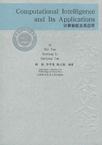计算智能及其应用
出版时间:2009-6 出版社:中国科学技术大学出版社 作者:姚新,李学龙,陶大程 编著 页数:307
Tag标签:无
前言
大学最重要的功能是向社会输送人才,大学对于一个国家、民族乃至世界的重要性和贡献度,很大程度上是通过毕业生在社会各领域所取得的成就来体现的。中国科学技术大学建校只有短短的五十年,之所以迅速成为享有较高国际声誉的著名大学之一,主要就是因为她培养出了一大批德才兼备的优秀毕业生,他们志向高远、基础扎实、综合素质高、创新能力强,在国内外科技、’经济、教育等领域做出了杰出的贡献,为中国科大赢得了“科技英才的摇篮”的美誉。2008年9月,胡锦涛总书记为中国科大建校五十周年发来贺信,信中称赞说:半个世纪以来,中国科学技术大学依托中国科学院,按照全院办校、所系结合的方针,弘扬红专并进、理实交融的校风,努力推进教学和科研工作的改革创新,为党和国家培养了一大批科技人才,取得了一系列具有世界先进水平的原创性科技成果,为推动我国科教事业发展和社会主义现代化建设做出了重要贡献。据统计,中国科大迄今已毕业的5万人中,已有42人当选中国科学院和中国工程院院士,是同期(自1963年以来)毕业生中当选院士数最多的高校之一,其中,本科毕业生中平均每1000人就产生1名院士和七百多名硕士、博士,比例位居全国高校之首,还有众多的中青年才俊成为我国科技、企业、教育等领域的领军人物和骨干,在历年评选的“中国青年五四奖章”获得者中,作为科技界、科技创新型企业界青年才俊代表,科大毕业生已连续多年榜上有名,获奖总人数位居全国高校前列,鲜为人知的是,有数千名优秀毕业生踏上国防战线,为科技强军做出了重要贡献,涌现出二十多名科技将军和一大批国防科技中坚。
内容概要
本书阐述计算智能的理论和相关的应用。重点介绍了如下三个方面的内容:计算智能的前沿技术,可以用计算智能的方法来解决的前沿问题,计算智能的最新技术在相关领域的应用。本书可作为信息科学技术领域高年级本科生和研究生的针对计算智能的入门教材,也可以供从事科研和技术开发的人员参考。IEEE计算智能协会(www.ieee-cis.ors)是该领域重要学术组织,并为本书编写提供很大帮助。
书籍目录
Preface to the USTC Alumni's SeriesPreface1 Adaptive Particle Filters 1.1 Bayesian Filtering for Dynamic State Estimation 1.1.1 State and Observation Models 1.1.2 Bayesian Filtering Method 1.2 Fundamentals of Particle Filters 1.2.1 Sequential Monte Carlo Method 1.2.2 Basic Particle Filtering Algorithms 1.3 Challenging Issues in Particle Filtering 1.3.1 Unknown or Varying State Model 1.3.2 Construction of Proposal Density 1.3.3 Determination of Sample Size 1.3.4 Curse of Dimensionality 1.4 Adaptive Particle Filtering Algorithms 1.4.1 Algorithms with Adaptive Sample Size. 1.4.2 Algorithms with Adaptive Proposal:Density 1.4.3 Other Related Algorithms 1.5 Summary References Brief Introduction of Authors2 Feature Localization and Shape Indexing for Content Based Image Retrieval 2.1 Introduction 2.2 Locales for Feature Localization 2.3 Search by Object Model 2.4 Shape Indexing and Recognition 2.5 Experimental Results 2.5.1 Search Using Locale-based Models 2.5.2 Video Locales 2.5.3 Shape Indexing and Recognition 2.6 Conclusion References Brief Introduction of Authors3 BlueGene/L Failure Analysis and Prediction Models 3.1 Introduction 3.2 BlueGene/L Architecture, RAS Event Logs, and Job Logs 3.2.1 BlueGene/L Architecture 3.2.2 RAS Event Logs 3.2.3 Job Logs 3.3 Impact of Failures on Job Executions 3.4 Failure Prediction Based on Failure Characteristics 3.4.1 Temporal Characteristics 3.4.2 Spatial Characteristics 3.5 Predicting Failures Using the Occurrence of Non-Fatal Events 3.6 Related Work 3.7 Concluding Remarks and Future Directions References Brief Introduction of Authors4 A Neuro-Fuzzy Approach towards Adaptive Intrusion Tolerant Database Systems 4.1 Overview 4.2 ITDB architecture 4.3 The Need for Adaptivity 4.4 Intelligent Techniques Solutions in Adaptive ITDB 4.5 Intelligent Techniques Solutions in Adaptive ITDB 4.6 The Design of Reconfiguration Components 4.7 Performance Metrics for Adaptive ITDB 4.8 Adaptation Criteria 4.9 The Rule-Based Adaptive Controller 4.10 The Neuro-Fuzzy Adaptive Controller 4.11 The collection of training data 4.12 Evaluation Methodology 4.12.1 Transaction Simulation 4.12.2 Evaluation Criteria 4.13 Evaluation of NFAC and RBAC Performance 4.14 Conclusion……
章节摘录
插图:The likelihood-based adaptation method is developed for the SIR particle filtering algorithm and it has been applied to the dynamic Bayesian net- works [17] and mobile robot localization applications [10]. In the likelihood- based method, the sample size is determined based on the likelihood of observations; more specifically, at each iteration of particle filtering, particles are generated until the sum of the unnormalized likelihoods (i.e., the unnorrealized importance weights given in Equation (1.14)) exceeds a pre-specified threshold. Thus, in essence, such a method is based on a fixed sum of the un- normalized weights rather than a fixed sample size [17]. The likelihood-based method is easy to implement.The likelihood-based adaptation method may be justified intuitively: if the sample set is well in tune with the observations, each individual importance weight is large and the sample set remains small, which is typically the case in tracking; however, if the observations carry a lot of surprises, as is the case in initial estimation, the individual particle weights are small and the sample set becomes large [11]. Such a method may be viewed as a type of active learning, where the learning algorithm has the ability to ask for more data when necessary [17]. It is well known that the variance of the importance sampler is a function of the mismatch between the proposal density and the target density [25]. The likelihood-based adaptation method directly relates the sample size with this mismatch. But, unfortunately, such a mismatch is not always an accurate indicator for the necessary number of particles. In addition, in some scenarios, a few particles with very large importance weights may terminate the sampling-process prematurely. Thus, as discussed in [ii], the likelihood-based method may not always provide the proper adaptation that is needed in particle filtering.
编辑推荐
《计算智能及其应用》是由中国科学技术大学出版社出版的。
图书封面
图书标签Tags
无
评论、评分、阅读与下载
